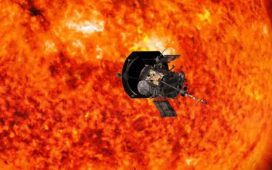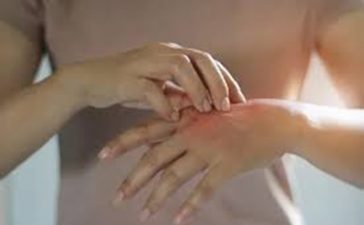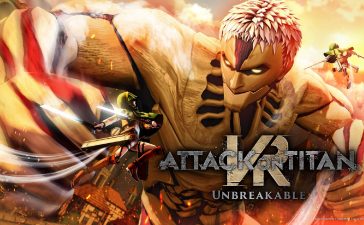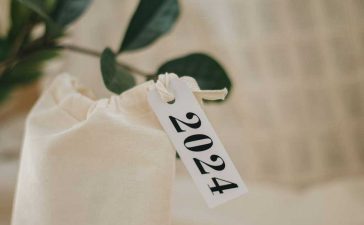One of the aspirations of science and technology is to overcome the limitations of human nature. From the stone arrows that turned humans into the most fearsome predator on the planet, despite being a rather puny animal, to agriculture and the invention of the sewer system, knowledge and its practical applications have become our species’ main strength. Each time a frontier is crossed, a new one appears beyond it that is even more complicated but also more attractive for the same reason.
Today, two of those frontiers are space and cancer; one is external and ties us to the planet on which we were born, and the other is internal and a disease that kills us but is also inseparable from all the mechanisms that keep us alive. Sara García, 33, is a reserve on the new team of European Space Agency (ESA) astronauts and a researcher at the National Cancer Research Center (CNIO) in Madrid, Spain. She works on both of these frontiers.
Although she recognizes that she “jealously guards her privacy” and doesn’t like “to put herself out there and be with people very much,” the media attention she has received since she was chosen by the ESA has given her “a megaphone” that she likes using “to disseminate science, to convey the benefits of the space missions’ research to society and to encourage girls and boys to pursue careers [in science and technology].” As part of her outreach work, she recently participated at the III R&D Forum held by the pharmaceutical company Novo Nordisk in Madrid, at which several experts spoke about the future of health, sustainability and society.
Question. Now you are better known as an astronaut, but what work do you do as a cancer researcher?
Answer. In Mariano Barbacid’s laboratory, where I work, they have been searching for over a decade for therapeutic targets to design drugs or therapies to combat types of cancer that are known to be promoted by a particular mutation, which is the mutation in the KRAS oncogene. After years of research, they have come up with a very important target, because when it is eliminated in mouse models it causes tumor suppression but does not cause toxicity. This target is called RAF1. I joined the research at that point. In order to design drugs, we have to know what this target is like, what its three-dimensional shape is, to see what gaps, what vulnerabilities this protein has, and to design specific drugs for attacking them. That is my project. I managed to isolate the protein and purify it, which was something that had been unsuccessfully attempted for 30 years. We solved the atomic structure at a very high level of resolution, and right now we are in the process of testing candidates to design a drug that achieves this therapeutic effect.
Q. How can that work be combined with research in space?
A. I believe that the microgravity research done on the International Space Station [ISS] can give us a perspective that is impossible to reproduce on Earth because of gravity. For example, many laboratories involved in cancer research use models called organoids or tumoroids, which are groups of three-dimensional cells that more or less faithfully reproduce what would happen in a tumor inside a human being. On the ISS, where there is no gravity, it happens naturally. You don’t have to force three-dimensional versus two-dimensional growth, which is what we researchers usually do in culture plates.
Another interesting point is that when cells are affected by the absence of gravity or by the cosmic radiation they experience in space, it can reveal vulnerabilities that we may not have observed on Earth because we don’t have those conditions. This may give us clues about signaling pathways or possible treatments to combat the tumorigenic nature of the cells.
Q. What kind of research can only be carried out in space?
A. One example is research related to aging. Studies on the ISS, in microgravity, are like studying aging in an accelerated way. You don’t have to take tissue samples every few years for many years to see how different tissues are changing. In six months, which is the usual length of [space] missions now, there are many impacts on human physiology that, to a large extent, mimic the pathologies associated with aging and age.
One characteristic that has been observed since space missions began is the fairly major degeneration and loss of muscle mass and the degeneration and loss of bone mass. We’ve also seen that being subjected to cosmic radiation makes you more prone to changes that would lead to cancer, which is also an age-associated disease, and vision problems, such as cataracts. All of this occurs over a six-month period.
Q. Nobel laureate in physics Steven Weinberg, who was very critical of the usefulness of humans in space exploration as compared to robots, famously said: “[Humans] radiate heat, they’re very expensive to keep alive and unlike robotic missions, they have a natural desire to come back [to Earth].” Now that almost all professions seem threatened by artificial intelligence and machines, do you think there is a future for humans in space?
A. I understand that point, and it’s perfectly defensible. But I don’t believe that human exploration and robotics are mutually exclusive. In fact, the ESA department to which we astronauts and astronaut candidates belong is called human exploration and robotics, because the idea is to combine the two. The robots are laying the groundwork, taking samples and studying the details to prepare for the arrival of humans.
Moreover, when we talk about research on aging and analysis of the physiological effects that take place in a human being, for example, the astronauts themselves are the guinea pigs, and what better way to reproduce what happens in a human being than with a human being. And just to take animal models — mouse models, plant models, yeast models — you need a technician to collect that information. It is true that robots could be used, but today, the creativity, the ability to change an action in progress, to react to an unforeseen event that is not in the protocols, I think, is greater in humans than in machines, and I would like to think that will not change. We still outperform machines. Just look at all the missions to the Moon, with probes and robots to collect regolith samples, which were far exceeded by the astronauts of the Apollo missions, who were able to collect much more. The combination of robots and humans is very interesting for establishing permanent bases on the Moon. The robots could do riskier tasks, such as searching for an area to establish the base and drilling for resources, and then humans could do the other, more difficult jobs for the robots.
Q. A very common question for astronauts. The ISS budget is over $3 billion a year. What do you get from it?
A. I have learned a lot of things I didn’t know, there are countless applications, like the same technology of the cell phone with which you are recording the interview, and many more things. One application that has caught my attention has to do with developing new forms of food for astronauts. It is well known that astronaut food has to be powdered and dehydrated, so that it takes up very little space. They were working with a blue-green algae, called spirulina, and they learned how to grow it under conditions of microgravity and then dehydrate it. This whole system was observed to generate a tremendously nutritious product and gave the necessary amount of nutrients and vitamins that a human being needs in a day. They transferred this super-simple algae cultivation and drying system to the Congo. Now, with one gram of powder of these algae, which are cultivated in tubs and then dried, they have all the nutritional properties and vitamins needed to survive, and it is a tool for fighting world hunger.
Sign up for our weekly newsletter to get more English-language news coverage from EL PAÍS USA Edition












